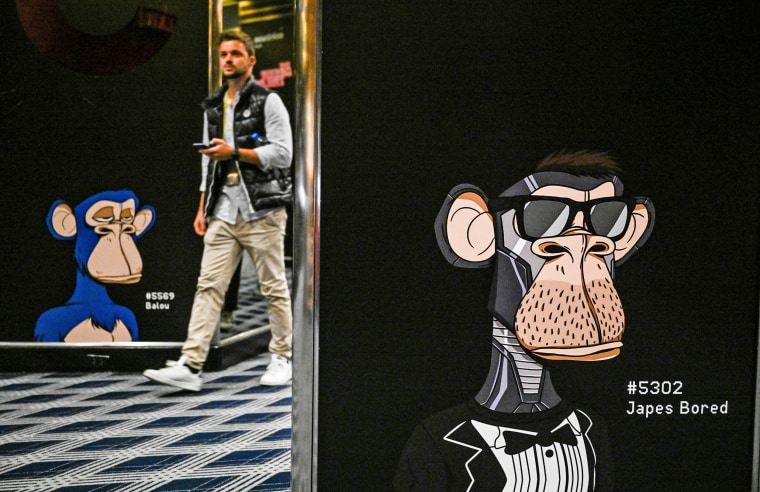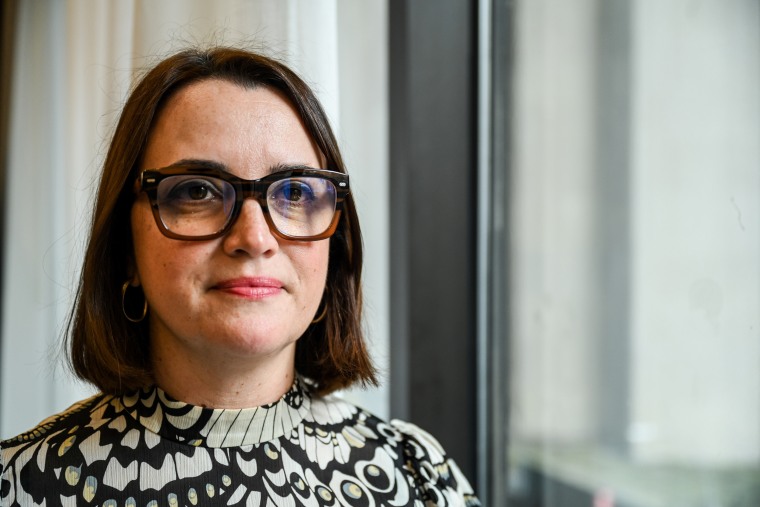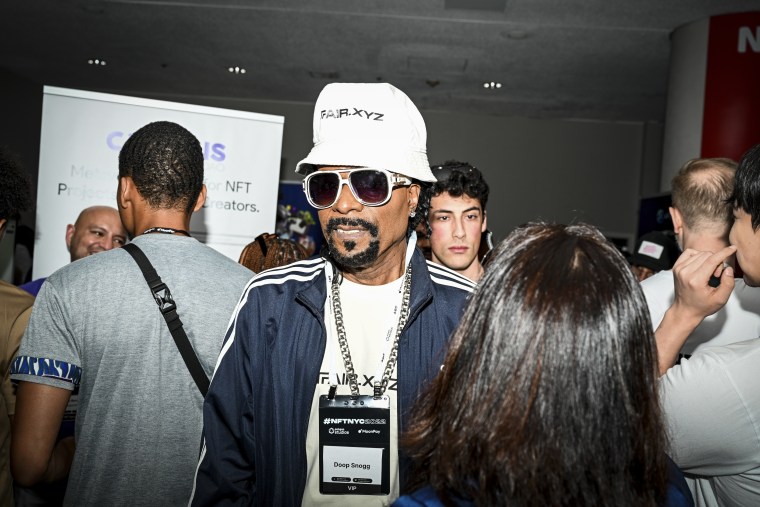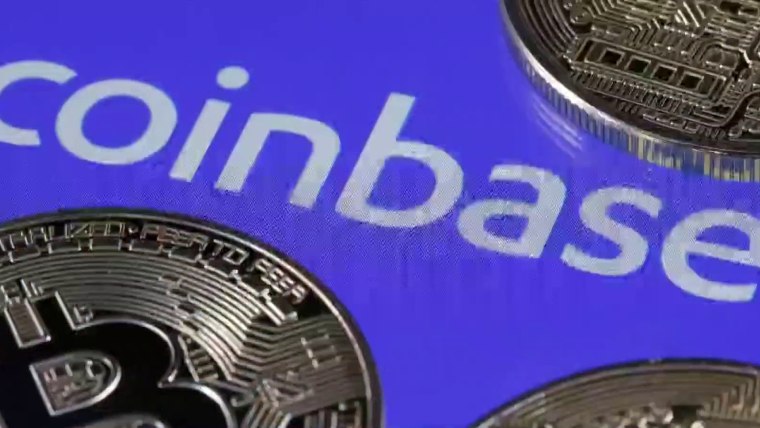The crypto market has crashed. Digital art trading is down. But for the world’s biggest gathering of NFT enthusiasts, the party rages on harder than ever.
More than 15,000 people are expected to gather in Times Square this week for NFT.NYC, a conference devoted to non-fungible tokens, or NFTs, a technology that has been likened to digital certificates of authenticity and which enthusiasts tout as the future of everything from art and collectibles to the internet itself. Buoyed by soaring crypto prices, NFTs became a $40 billion market last year.
And as a digital movement built on overwhelming positivity, the NFT community showed few signs of letting the recent market issues shake its confidence.
“It’s a build market,” said Travis Wright, a co-host of the Bad Crypto podcast and one of the MCs of the event’s main speaker stage on Tuesday in Radio City Music Hall. The conference rented the legendary theater with help from sponsors like Coinbase, the largest U.S. cryptocurrency exchange, which recently announced it was laying off about 1,100 employees, about 18% of its staff.
“Did you feel at this conference that somehow this is tough right now?” said Joel Comm, Wright’s podcast partner and co-MC. “No, this is great stuff.”

Inside the Marriott Marquis nearby, where the conference has rented six floors, crowds packed the hallways, flanked by vendors taking up almost all available floor space. Many in the crowd, mostly men ranging from teens to late 30s, were in a perpetual state of pitching their idea for how to improve on what they all seem to agree is the future of art and digital collectibles.
The NFT market grew slowly for several years and then exploded in 2021. But prices for some NFTs have dramatically plummeted, and the number of accounts trading NFTs has finally declined this year.
Meanwhile, the broader crypto market has also declined significantly. Ethereum, the cryptocurrency that serves as the backbone of the majority of NFT and other Web3.0 projects, is now worth somewhere between a third and a quarter of what it was for most of the past year.
But attendance at NFT.NYC is projected by the event’s organizer to triple from its last meeting in November. Undeterred by the “crypto winter,” attendees paid between $599 and $1,999 for tickets, then waited in lines that stretched around the block to get into the Marriott.
And many of the attendees who spoke with NBC News offered a mix of optimism and inevitability around NFT technology. Many still view it as early days for NFTs, ripe for people to experiment with their own projects.
David Angelo, who along with three friends started an NFT art project called Naughty Giraffes, a collection of 10,000 giraffe cartoons, said he has long-term faith in the technology.
“Not everybody’s going to make it,” said Angelo, who wore a giraffe costume to the conference. “Not everybody’s going to be able to get to the promised land, which might be longer than we all hope and we all expect.”
Like many attendees, Angelo, an early crypto adopter, said he was personally fine weathering the crypto winter and that he viewed it as an investment opportunity rather than a sign that the NFT market had peaked. But he acknowledged that people who had just invested into the space before the crash could be left holding the bag.
He’s not alone in his long-term optimism. Despite the crash, venture capitalists continue to invest in NFT and other Web 3.0 companies.
FalconX, a platform for trading digital assets, was valued at $8 billion in a new funding round, the company said Wednesday. Magic Eden, an NFT marketplace that launched in 2021, just raised an additional $130 million. And Meta published an NFT-for-beginners guide on Wednesday, part of the company’s broader push to convince its users that it’s the home of virtual worlds.
Some also see real-world applications. Jeanne Anderson, the co-founder and CEO of Danvas, a company that plans to sell screens as canvases for digital art, said at NFT.NYC that art galleries that had heavily invested in NFTs were still embracing that market despite the downturn.

“Everyone knew that the winter was coming,” she said. “It came a little faster than some people estimated, but no one went into 2022 thinking that there wouldn’t be a period of change.”
“There’re very few institutional museums out there that are immediately responsive to trends. That’s just not what a museum generally is about,” Anderson said.
Still, she said she was lucky to get $7 million in funding for her company in December, soon before the crash.

“It would be tough to start your fundraising at this moment, for sure,” she said. “I guess I feel lucky that we fundraised when we did.”
NFT skeptics continue to express concerns about the community’s propensity to overpromise and at times fudge the details. At one point in a Marriott hallway, a security guard cleared the way for someone who appeared to be rapper Snoop Dogg, who sells branded NFTs.
Only upon closer inspection was it clear that the man was an impersonator hired by an NFT company, and that his official conference badge read “Doop Snogg.”
Source: | This article originally belongs to Nbcnews.com











